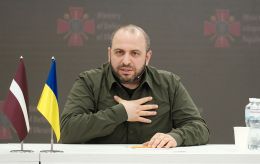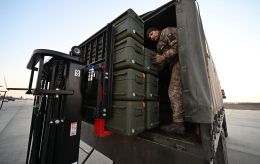Trump stalls as war grinds on. Why Ukraine-US-Russia peace talks are going nowhere
 Photo: US President Donald Trump (Getty Images)
Photo: US President Donald Trump (Getty Images)
Read about the roots of a noticeable pause in Russia-Ukraine peace negotiations, Trump’s indecisiveness, and Putin’s plans in the RBC-Ukraine article below.
When Donald Trump sharply intensified his activity on the Ukrainian front, an endless series of various meetings, calls, and statements from the top leadership of Ukraine, the US, and Russia followed. Alongside them came a daily stream of various leaks (in quotation marks and without) in Western media — regarding the real intentions and plans of all participants in the process, as well as details of discussions behind closed doors of high offices.
But for a couple of weeks now, this stream has noticeably dried up. There are almost no more “leaks,” nor are there meetings or calls at the highest level devoted to the peaceful resolution of the Russia-Ukraine war. Even Trump and his team have stopped cheerfully reporting their grand successes on the Ukrainian front.
Meanwhile, a strange, truly hybrid, month-long “ceasefire” continues. Its conditions are unclear (each side offers its own version), as is the actual start date and, accordingly, the end date — once again, the US, Ukraine, and Russia rely on different dates. And the truce itself, based primarily — one way or another — on a ban on strikes on energy infrastructure, is regularly violated by the aggressors. Not to mention that the words “ceasefire” — of any kind — and “shelling of Kryvyi Rih” cannot be reconciled in a single sentence in the perception of Ukrainians.
The war is not “frozen,” quite the opposite, while the peace negotiation process is clearly freezing. Will Trump be able to unfreeze it in the foreseeable future? Most of RBC-Ukraine’s interlocutors, both in Western and Ukrainian political circles, believe that he will definitely try, and quite soon. But whether he will succeed — no one dares to predict.
Pre-election expectations from Trump
Even before the US presidential elections, Trump’s Ukrainian supporters — who likely were more numerous then than now — envisioned the following favorable scenario in case of his victory. Trump, with all his enthusiasm, takes up a peaceful resolution, puts forward some conditions to Ukraine, Ukraine resists, Trump tightens the screws, Ukraine somehow agrees, then Trump puts forward conditions to Russia — and Russia, on the contrary, insists, not retreating from its maximalist goals.
And here, the American president realizes who the real bad guys in this story are, tightens the screws on the Russians, and, conversely, pours all kinds of aid onto Ukraine. Notably, RBC-Ukraine heard similar considerations (albeit with the caveat “if we’re very lucky”) from some Western diplomats back then.
Paradoxically, but with some adjustments, events so far are indeed developing along those lines. Trump set out to “reconcile” the aggressor and the victim with all his pressure and presented Ukraine with a number of conditions. Ukraine refused, and after a scandal in the Oval Office, the screws were tightened in the form of a pause in military aid.
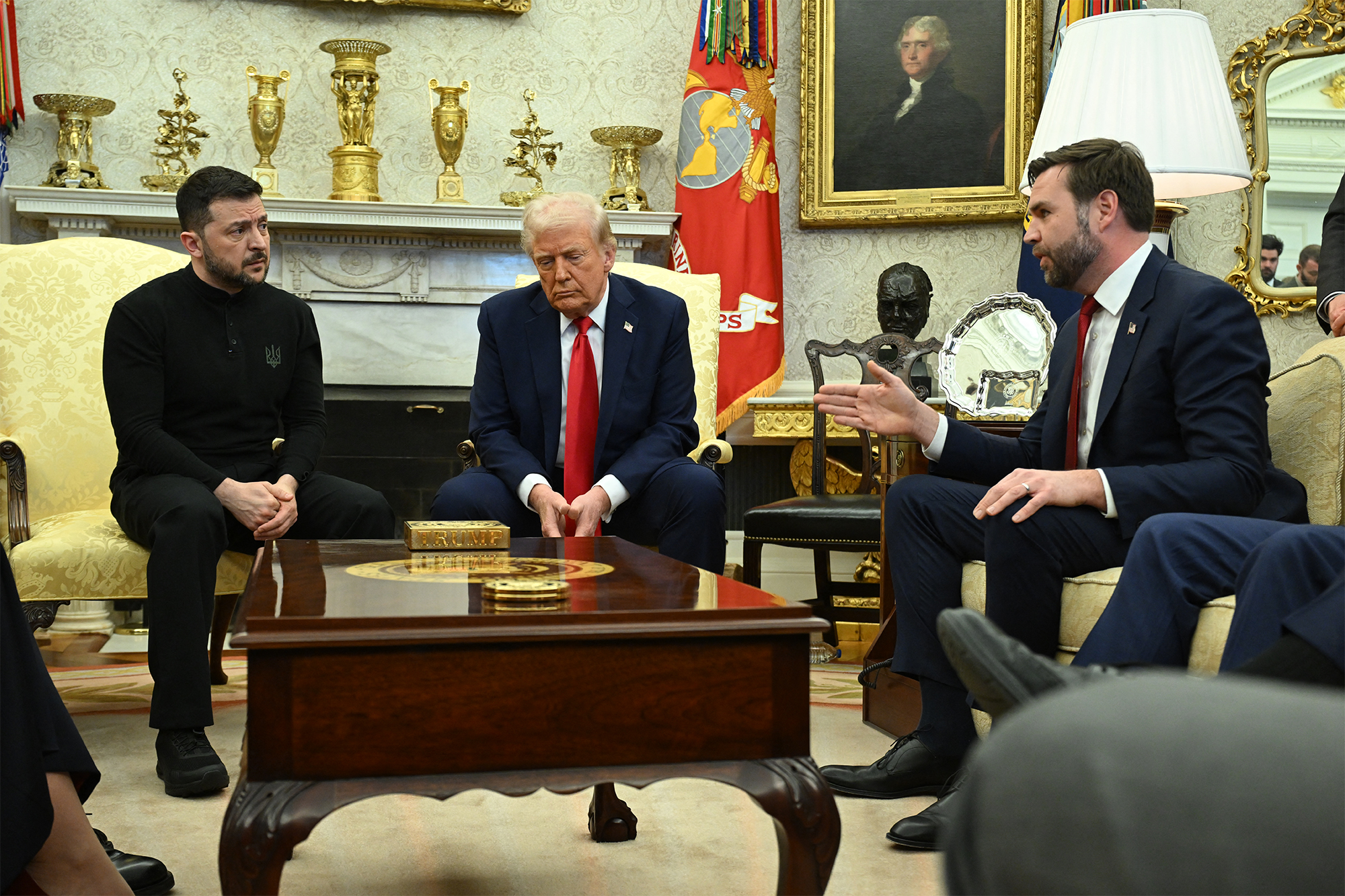
Meeting in the Oval Office on February 28 (photo: Getty Images)
“On February 28, I saw how the US shifted from the position of an ally to the position of an ‘honest broker,’ but one who actually leans towards Russia,” a European diplomat shared his impressions with RBC-Ukraine.
As a result, Ukraine backed down a bit, even moved its red lines slightly, and most importantly, thanked Trump for all his efforts. In fact, the Ukrainian side agreed to almost all of the White House’s peace proposals after pointedly constructive discussions.
Trump turned to Russia — and here came the expected misfire. Expected, yet, only by those who have been dealing with Russians for many years: Moscow resists, is rude, snaps back, makes up conditions and excuses — anything to avoid doing what it formally agreed to — cease fire and move toward a real settlement.
It would seem the perfect moment for the White House chief to realize who the bad guys really are and who actually needs to be punished. But things are still moving with difficulties, even though the aggressors are doing everything they can to open Trump’s eyes.
What Trump wants
A number of RBC-Ukraine’s sources in local and European circles are confident that Trump indeed would like to achieve a real, not just formal, ceasefire by Easter or by the first hundred days of his presidency, by the end of April.
“A ceasefire in Ukraine could give impetus to ending the war. A ceasefire in Ukraine — that’s Trump’s idea. We see it as a first step toward ending the war. He’s interested in this step,” said Volodymyr Zelenskyy at a meeting with journalists this week.
In Trump’s understanding, a lasting ceasefire is, essentially, the very “end of the war” that he can profitably sell to the American public. For Ukraine, however, the final peace agreement and what follows it matter more: various security guarantees that would prevent new Russian aggression in the long term.
But for now, even the first step in the form of a full truce is still far off. And this is starting to openly irritate Trump, as he himself tells journalists. For the first time, not only compliments but also threats are being addressed to Russia.
Regardless, they are having no impact on the Kremlin so far. Moreover, in recent days, Russian propagandists have begun to allow themselves statements about Trump that had been unacceptable in recent months: such as saying that he is "stomping his foot whimsically," and that the US has "gotten carried away with being a global hegemon." And deputy foreign minister Ryabkov is babbling about the "need to eliminate the root causes of the conflict," directly rejecting American peace proposals.
RBC-Ukraine’s interlocutors among European diplomats are divided in their opinions on how Trump might finally force Putin to do at least something. Some believe that Trump only needs to further ramp up the heat of his rhetoric. Others believe that it will definitely not be enough. “Loud threats from Trump alone will definitely not suffice, no matter how strong they are. Putin may only respond to actions,” says one Eastern European diplomat.
What Putin wants
All numerous sources of RBC-Ukraine agree on one thing — the Kremlin's current line of behavior has several significant reasons.
First — Putin is simply testing the limits of Trump’s patience, using the Russians’ favorite negotiation tactic. Sometimes he does so unsuccessfully — as with the attempt to revive the stale story about the “illegitimate Zelenskyy,” which provoked separate outrage from Trump. But, once again, that did not go beyond rhetoric.
Second — Russia wants to completely drive the Armed Forces of Ukraine from its territory in order to deprive Ukraine of this trump card in any potential negotiations.
Third and most important — Putin, encouraged by his generals, believes he can greatly improve his “negotiating positions” by further occupying Ukrainian territory. “There are grounds to believe that we will finish them off,” said the Russian leader a few weeks ago. Of course, “finishing off” won’t work, but capturing more villages and towns already reduced to dust — the Kremlin sees it as an achievable task. For this purpose, Russia has recently intensified its offensive actions. All the more so since summer is ahead — the best season for an attack.
Meanwhile, Russia has managed to revive a strictly bilateral US-Russia dialogue. Putin's special envoy Kirill Dmitriev, with his good connections in American business circles, had no trouble finding common ground with Trump’s special envoy, businessman Steve Witkoff. He is now vigorously trying to interest the Americans in joint business projects — from the exploitation of Russian natural resources to the mutually beneficial unfreezing of hundreds of billions of Russian funds locked in Brussels.
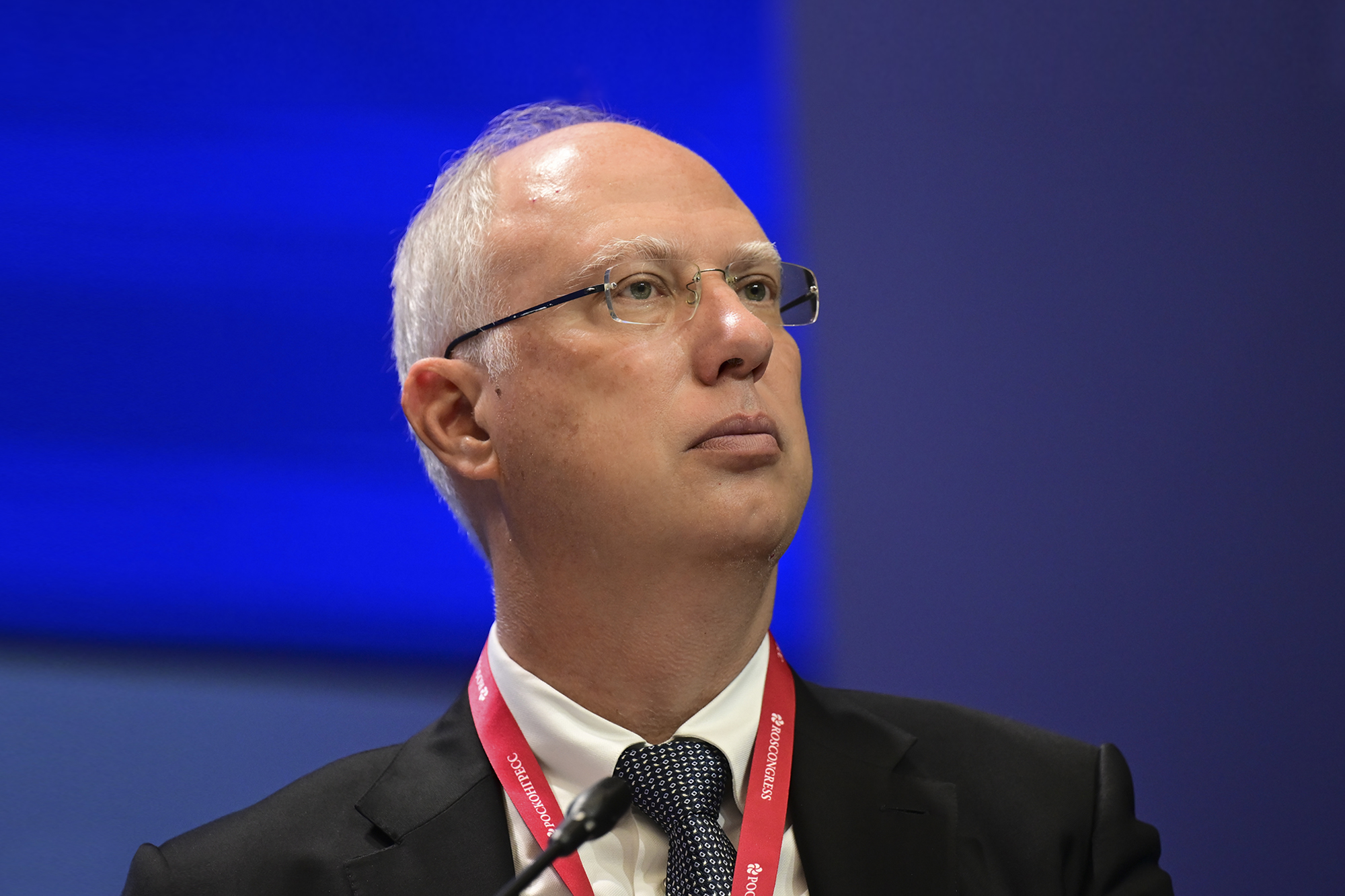
Russia, in general, is in no hurry — the economy still allows it to continue fighting. The flow of people willing to lose their heads in the Donbas steppes in exchange for a Lada Kalina (budget-friendly Russian car) for their family has also not dried up.
Meanwhile, Trump doesn’t have unlimited time, especially amidst the White House’s debatable economic policy and the growing number of other problems that are causing dissatisfaction even within his own Republican Party. Secretary of State Marco Rubio says that the US will understand “within weeks, not months” whether Russia is really intent on ending the war, and his boss “won’t fall into the trap of endless talks about talks.” But again, these are only words for now.
What they want from Ukraine
Ukrainians barely had time to rejoice that Trump finally began to show verbal aggression not only toward them but also toward the Russians, when the American president again leveled the playing field. Putin, of course, “angered” him, but Zelenskyy “may have big problems” if he refuses a deal on mineral resources.
Although Trump seemingly cooled down after the Oval Office clash, he definitely hasn’t forgotten what happened. And he decided to punish the Ukrainians with a new, much tougher version of the minerals deal than the one in February.
However, Zelenskyy and other top representatives of the Ukrainian government have already repeatedly stated their red lines and made it clear that they will only sign anything after a long, systematic, and measured process of working on the text of the document.
“The minerals deal is critical to your overall success, it is the foundation of relations with the US, it will help both in terms of security guarantees and in negotiations on a ceasefire. Find ways to resolve this matter positively,” says an RBC-Ukraine interlocutor in diplomatic circles. And he offers another piece of advice: “Your side cannot influence many things in the US. So influence what you can influence. And don’t overreact to the words you hear — respond to concrete actions.”
All the more so because in the current Trump administration and around it, there are quite a few people who are basically pushing the White House to completely abandon Ukraine and focus on other, easier issues. Excessive emotional reactions from Kyiv only strengthen their positions.
***
Further steps on the Ukraine-US-Russia track remain completely unclear. According to Zelenskyy, a meeting between the Ukrainian and American delegations will take place “in the coming weeks,” after the Americans met with the Russians yesterday. But at what level these talks will be held, what will be discussed, and whether even the current strange “energy truce” will be extended — remains unknown for now.
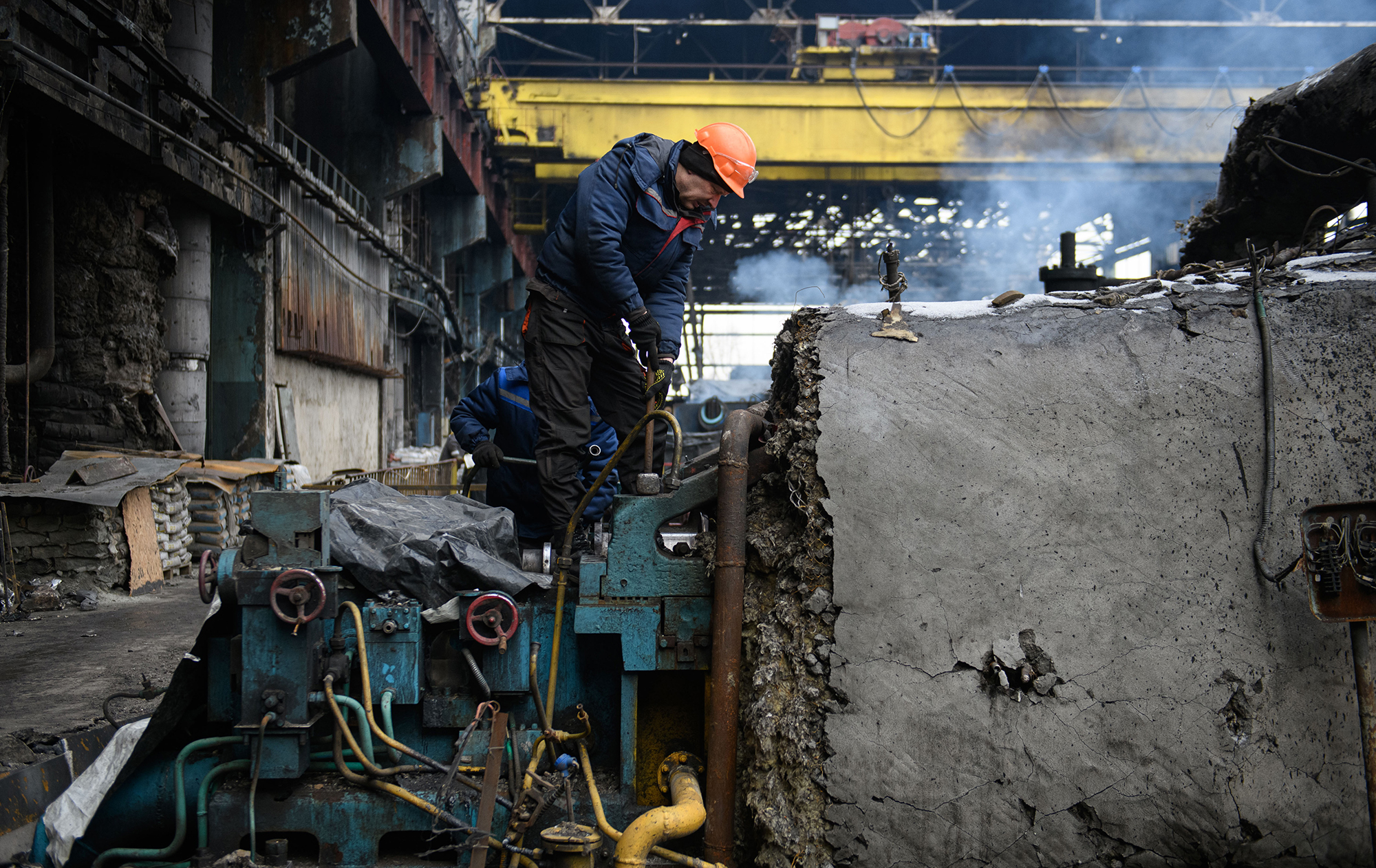
Aftermath of a Russian shelling (photo: Getty Images)
The news could come at any moment, absolutely any. Just this week, Trump once again vividly demonstrated his method of making strategic decisions. “I think it probably came together early this morning, fairly early this morning,” he explained the sudden pause in the tariff war against the whole world.
What decision might come to Trump’s mind regarding the Russia-Ukraine war — Kyiv could find out any day now, starting from about lunchtime — taking the time difference into account.
As RBC-Ukraine previously reported, according to American volleyball terminology, the negotiation “ball” three weeks ago was in the Russian court. And, as expected, the Russians were soon to toss it back to the Ukrainians or the Americans. Now, however, it seems that the ball has been lost altogether, and all the participants in the game are feebly arguing about who’s to blame.
